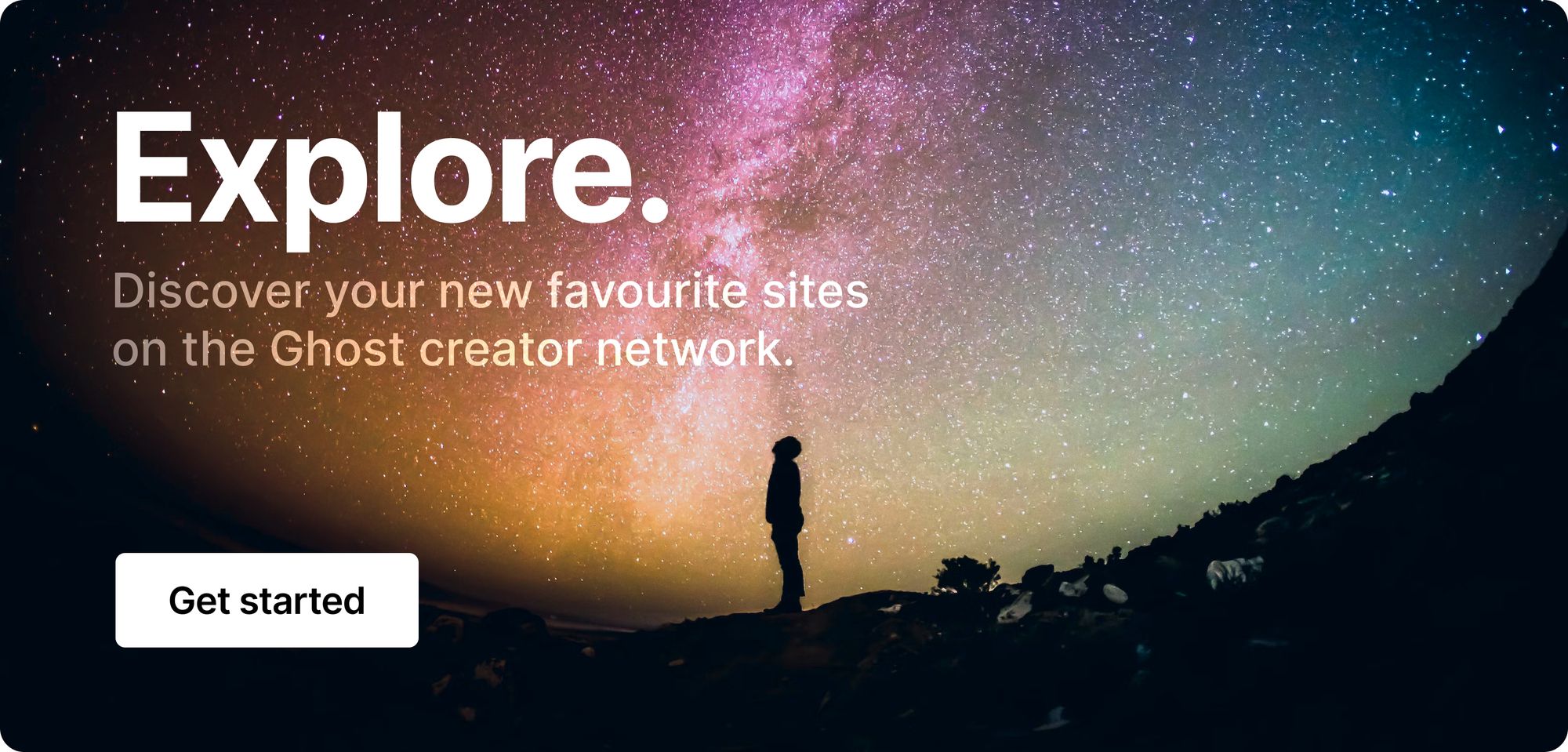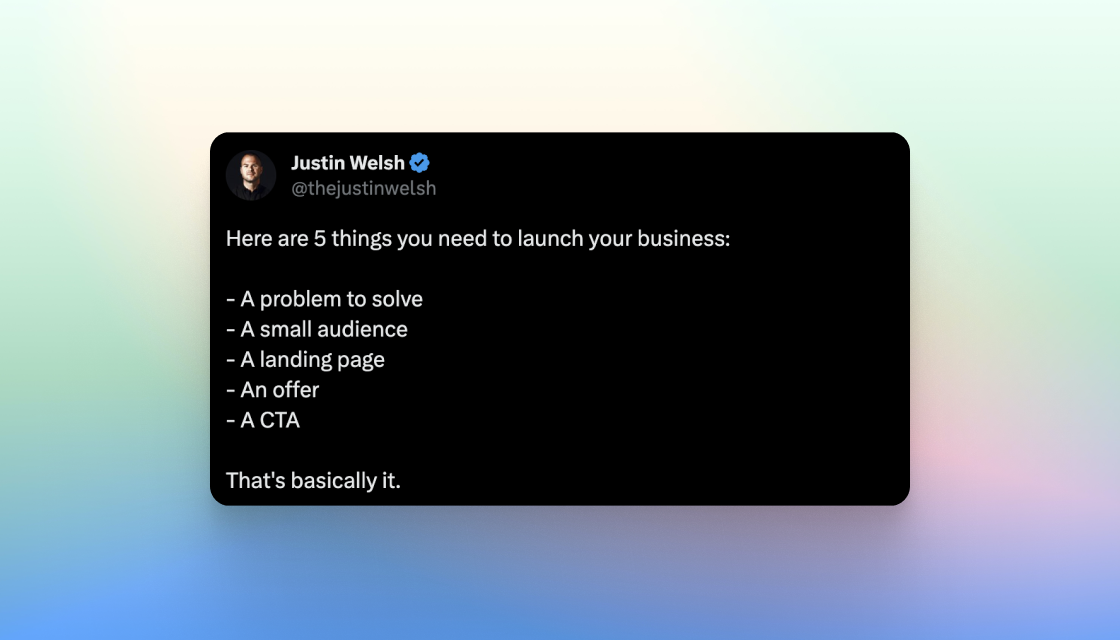🐌 Slow and steady wins the race
Welcome back to your weekly update of the latest stories and ideas in the creator economy & hi if you're new here 👋 This week's roundup is all about embracing steady growth, transparency, and... ethical stealing. Let's jump right in!
💬 In this week's issue:
- Newsletter growth. Should you hit the ground running, or grow slowly? Here's some ideas to help carve out your strategy.
- Money matters. Find out how being transparent with your audience and talking about money can help your business.
- The art of stealing. Use these tips to ethically source inspiration for your own content.
Was this email forwarded to you? Subscribe here!
Embrace the pace: It's ok to grow slow

In the creator space, we talk about growth a lot. How to grow an audience, or increase the number of paid subscribers is a hot topic. But as Claire Zulkey argues in a recent Inbox Collective article — focusing on rapid growth isn't necessarily the path forward for all newsletters.
For some indie newsletters, a focus on content or community — not growth — is the right move.
Not everyone wants to build an aggressive growth strategy. In fact, leaning too hard into a multi-faceted approach with cross-promotions, social media, sponsorships, and paid marketing may actually detract from what is most important. As the saying goes, "Keep it simple, stupid!"
I have been publishing my twice-weekly parenting newsletter, Evil Witches, since 2018 with a philosophy that favors slow, organic growth — and it’s worked. With light social media marketing and in-newsletter encouragement to share, I’ve grown my free readership to over 10,000 subscribers, with nearly 10% of those readers paying a subscription fee. The newsletter brings in money — not enough to be my only mode of income, but that’s not my goal. I like having the flexibility to build out multiple revenue streams, including my newsletter, freelance writing, and editing work.
There are many indie newsletters in the world that prioritize things other than growth, and take a slow and steady approach towards success. Here's a summary of some food for thought that Claire shared in the article:
- Embracing side-projects. Many publishers find a lot of joy and productivity in running a newsletter alongside a primary job. Maybe you really like your day job, and maybe your day job is what makes your newsletter stand out within your niche. When balanced well, a newsletter as a side project can be a fulfilling endeavor and can still generate some revenue as an upside.
- Diversifying revenue streams. For many creators, a newsletter is just one piece of the puzzle. For example, Chris La Tray who writes An Irritable Métis earns 40% of their income from the newsletter, but also chooses to leave space for workshops, public speaking, and book publishing.
- Finding the right pace. Growth for the sake of growth usually involves quick wins that can often lead to an unengaged and uninspired audience. Getting realistic about the pace of growth you actually need is beneficial if you want to build a truly meaningful community. For example, if you're a consultant or coach that can only work with a handful of clients per year, do you actually need tens of thousands of subscribers?
- Slow growth is still growth. The pursuit of slow growth doesn't mean ignoring growth completely. There's nothing wrong with running special offers or driving new subscribers from social media. It's easy to feel envious when we read about that one publisher who got 50,000 subscribers in 18 months. But ask yourself this: Are you willing to do what it takes to achieve the same level of growth? Or is a slow and steady approach better for your business?
Interesting stories & ideas 📚
- How to create content that attracts your dream sponsor (🎬)
- 50+ paywall examples to inspire your subscription strategy
- How to reach Gen-Z with brand influencer partnerships
- You don't need a vision, just a daily practice. Here's why.
- Find out how one newsletter creator sold out 2 months of sponsorships in a day
Opening up about money: How to break the ice with your audience

Should we tell our readers what it actually costs to produce our work? Lauren Kaljur argues yes, especially when it comes to journalism, honesty is the best policy.
The costs of investigative journalism have been hidden for so long, so this may feel like a shift in perspective, but for smaller independent outlets, it may also be the path required to make journalism more sustainable. Lauren writes:
This spring, The Discourse took home a Canadian Journalism Award for best community investigative feature. That story was part of a series exploring how low-income renters in Nanaimo were organizing in response to cuts and alleged bullying from their nonprofit housing provider. We decided to add up how much it cost us to produce that series. It took more than 470 hours of writing and reporting spread out over nine months. A total of 26,209 words over eight feature stories, with more than $20,000 spent on wages, lawyers and administrative fees. Yikes.
When growing a community of readers, transparency around these types of costs and the work that goes on behind the scenes can make it easier to make a bolder ask for financial support (more about making your ask in this issue of the Ghost newsletter).
Whether times are tough and you're facing cutbacks, or you are simply struggling to grow in order to provide more value for readers, getting comfortable and openly sharing what you need from your community can be a winning strategy.
If you’re comfortable sharing, share away. Because, ultimately, creating and delivering journalism in 2023 has no perfect playbook or business model.

How to steal content (ethically)

Is anything original anymore? Not really. (We're pretty sure originality peaked with Crystal Pepsi.) Does this mean everything we know and love is just a reformulated thing from another regurgitated thing? Absolutely. Does this also mean that taking inspiration from other creators is stealing? According to Alex Llull over at The Steal Club, if you do it the right way, definitely not.
There’s always some resistance whenever I talk about “stealing” ideas. Some people don’t agree with the use of "Steal" when it comes to online content. And I get it. When it’s so easy to plagiarize others, saying that you “steal” content doesn’t sound nice. But as the founder of The Steal Club, I have something to say: In this context, the term Stealing is rooted in inspiration. Some people confuse Stealing with copy-pasting. That’s not cool. – Alex Llull

So, how do you determine whether you're making something your own rather than flat-out copying someone else's work? Alex wants you to follow these steps:
- Pay attention to what's catching your eye. Make a habit of bookmarking the tweet, video, or article that made your brain happy.
- Examine what you've saved. Decipher how the content is formatted, and extract the meat.
- Make it your own. Take your pieces of inspiration, and mold it to your own voice and creative whims.
Remember, the core of stealing in the creative context relies on inspiration, not copy-pasting. You need to identify the big idea and the structures behind every piece of content. I understand some people may find this uncomfortable, but after looking at how the top creators work, I can guarantee that 99% do it this way. Stealing (the good kind) helps you become a better creator because every idea you encounter will influence you. – Alex Llull
Originality is dead, and newness is an illusion. What's "original" is in the eye of the beholder. If you're able to take what's already here and shape it into something that feels fresh, you may have discovered the key to infinite creation by inspiring someone else to steal from you. And what's a better compliment than that? 🥲
Curator's pick

Enjoy this newsletter?
Forward to a friend, sharing is caring.
Anything else? Hit reply to send us feedback or say hello. We don't bite!
Join an invite-only community! Connect with like-minded people who create content professionally — apply here.






